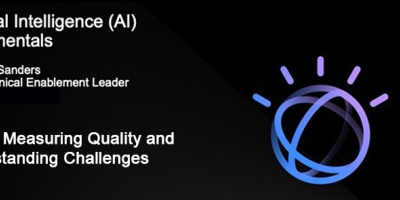Last month, we looked at some of the things you might want to do to prepare yourself for the changes AI is going to introduce. But what about your co-workers?
Most of us don’t work alone; we have co-workers. Usually, they’re physically close to us (often too close), but even if you’re a remote employee geographically separated from them, there are people with whom you share information and responsibilities on a regular schedule.
We looked at what you need to do to get ready for AI last month, but you probably aren’t running everything (despite what you may sometimes think). And your co-workers can provide a good counterbalance (or support) for the points you bring up. A good AI plan requires involvement from just about everyone, so what your co-workers think of and know about AI is important.
In addition, a cross-pollination effect can take place if your co-workers have a certain level of knowledge—that is, you should not view AI as something you have to do alone. The best AI plans come to fruition, like most projects, if you have people to bounce ideas off of and refine what you’re thinking of.
Plus, if some of your co-workers are management, you can start to get traction for some of your ideas.
So what do you need to do to get them ready?
What Is AI?
The first thing everyone in the company needs is an understanding of what AI is. Is it robots replacing humans, or is it limited to just analytics? What are the components of AI and, by extension, what are the components that might be of most use to your company?
A lot has been written and said about AI over the past five years, but most of it has been somewhat on the emotional side, and we’ll deal with that in a minute. But what is AI in reality? It used to be called Business Intelligence, and today it consists of four basic levels.
Levels of AI
At the bottom level are packages that are really only presentation software. These are things like Microsoft’s PowerBI or Tableau's offerings. They allow you to display a set of data in some sort of graph-like format. These products may yield very good insights and are probably best used to develop desktop KPI dashboards that can be used to help you determine when things are on (or off) track.
Above that level, you have data warehousing and the software that goes on top of that. This is gradually being subsumed under the “data analytics” heading as what is important here is not just to store data in a specific formatted way, but to be able to take data from a large number of sources (formatted and not) and to pull that in and analyze it as a whole.
Then you have the sexy part of AI: the personal assistants (Siri, Cortana, Alexa) who are there to help you if you are too lazy to turn the lights on yourself or have trouble remembering what playlist is yours. Obviously, this area will mature and will probably soon become something that can be used in the business environment to remind of us of meetings or other repetitive types of tasks that we need to do.
Finally, at the top you have Watson, Azure, TensorFlow, etc. These high-level products, particularly Watson, provide high-level decision-making functions and have been involved in areas as disparate as healthcare and supply-chain support. At this point, the jury still seems to be out as to whether they’ve succeeded, but very few people doubt that they ultimately will if they haven’t already.
Back to Your Co-Workers…
I’m not talking about setting up everyone to be a data scientist. Knowledge of Python should not be required. And many of the “basic” AI courses that can be found on the web may be too detailed to be beneficial to those of your co-workers who aren’t techies like you. Stick with the basics: what AI is (that is what components it has—analytics, bots, etc.) and what the terms are that they’re going to hear thrown around.
The primary thing here is to get everyone’s knowledge level past the emotional stage where their reaction to AI is flight or fight (“it’s going to take my job”) and into an area where they can see how AI is inevitably going to be part of our work environment and can be leveraged to enhance our jobs.
Remember, It’s Not Just Facts, It’s Culture
Culture is part of what AI is, but it’s a really important part, so I will discuss it separately.
As I noted, AI is an emotional issue. Robots are coming for our jobs, man! And if we’re talking about this century, that may be true. I honestly don’t know how this will play out, and I can see one possible future where laws are passed to prevent a human’s job from being taken by a robot (or, as they will be called in the future, “one of them”). But for the future of all but the youngest of us, I think AI will do more augmentation than actual replacement, and where the replacement does occur, it will be for jobs that are at the bottom end of the wage and skill spectrum.
Still, it is critical to remember the emotional side of the reaction to AI, and for some people this will be severe. What you’re really aiming at here is not just to get people to drink from the fire hose of information that is available, but to drive a real culture change. Total acceptance of AI may be too much to ask at first, but it’s reasonable to expect your co-workers to see it as something that can help as much as it can disrupt.
Those of us who are grizzled veterans of the early years of IT remember running into the same thing back in the ’70s and ’80s. Everyone thought their job was going to be taken away. In reality, that rarely happened (in my experience). At best, it allowed people to concentrate on more creative aspects of their job rather than just filling out forms. At worst, it actually made more work because there were more things that could be done. Bottom line was that it was not the end of the world.
No one can foretell what the future of AI will be, but it is better to face it looking for ways that it can help us, rather than standing behind a wooden barricade with a pitchfork and a torch.
Have Co-Workers Identify Challenges Facing the Company
Once everyone has a basic understanding of what AI is, you can move on to how it can help your company. Everyone will have their own unique perspective on this, of course, which is why AI is something that you can’t just do on your own. You may offer some starting points. For example, if you’re in the customer service area, would chat bots help reduce the human work load? Or maybe you need to start by doing analytics on the types of questions that come in. You would probably be surprised how much can be added by getting other people involved in this effort.
My guess is that the list of what your co-workers come up with for AI will be different from the list that the top executives, who have a tendency to think globally, would come up with because they think in terms of large, expensive, long-term projects. What co-workers will come up with will probably be more locally oriented and more specific. And this provides a real advantage. Global problems are generally larger and more time-consuming to attack. But if you can find some specific instances of where AI can help, it gives you some good experience with small-scale projects that can be done for a reasonable budget and within a realistic time frame.
In addition, a project, even if small, that someone suggests is more acceptable to them than something that is foisted upon them by outside forces, no matter how well-meaning. And acceptance by the user base is an important part of any AI project.
Summary
In the end, getting your co-workers ready for AI is more about an attitude shift than anything else.
It is about shifting them from fearing AI, which is going to happen whether they embrace it or not, to anticipating and helping to direct it. Individuals within a company do have that power, because they are the ones who can help shape what is being done and how it will affect them.
It is also about shifting them from waiting for AI to be imposed on them to becoming active participants in what happens.
Ignoring something never makes it go away. The sensible approach is to learn about it, see how you can use it, and then help guide how it is implemented. Getting your co-workers ready for this mind shift is key to making AI not only a reality in your company, but a partner.

























 More than ever, there is a demand for IT to deliver innovation. Your IBM i has been an essential part of your business operations for years. However, your organization may struggle to maintain the current system and implement new projects. The thousands of customers we've worked with and surveyed state that expectations regarding the digital footprint and vision of the company are not aligned with the current IT environment.
More than ever, there is a demand for IT to deliver innovation. Your IBM i has been an essential part of your business operations for years. However, your organization may struggle to maintain the current system and implement new projects. The thousands of customers we've worked with and surveyed state that expectations regarding the digital footprint and vision of the company are not aligned with the current IT environment. TRY the one package that solves all your document design and printing challenges on all your platforms. Produce bar code labels, electronic forms, ad hoc reports, and RFID tags – without programming! MarkMagic is the only document design and print solution that combines report writing, WYSIWYG label and forms design, and conditional printing in one integrated product. Make sure your data survives when catastrophe hits. Request your trial now! Request Now.
TRY the one package that solves all your document design and printing challenges on all your platforms. Produce bar code labels, electronic forms, ad hoc reports, and RFID tags – without programming! MarkMagic is the only document design and print solution that combines report writing, WYSIWYG label and forms design, and conditional printing in one integrated product. Make sure your data survives when catastrophe hits. Request your trial now! Request Now. Forms of ransomware has been around for over 30 years, and with more and more organizations suffering attacks each year, it continues to endure. What has made ransomware such a durable threat and what is the best way to combat it? In order to prevent ransomware, organizations must first understand how it works.
Forms of ransomware has been around for over 30 years, and with more and more organizations suffering attacks each year, it continues to endure. What has made ransomware such a durable threat and what is the best way to combat it? In order to prevent ransomware, organizations must first understand how it works. Disaster protection is vital to every business. Yet, it often consists of patched together procedures that are prone to error. From automatic backups to data encryption to media management, Robot automates the routine (yet often complex) tasks of iSeries backup and recovery, saving you time and money and making the process safer and more reliable. Automate your backups with the Robot Backup and Recovery Solution. Key features include:
Disaster protection is vital to every business. Yet, it often consists of patched together procedures that are prone to error. From automatic backups to data encryption to media management, Robot automates the routine (yet often complex) tasks of iSeries backup and recovery, saving you time and money and making the process safer and more reliable. Automate your backups with the Robot Backup and Recovery Solution. Key features include: Business users want new applications now. Market and regulatory pressures require faster application updates and delivery into production. Your IBM i developers may be approaching retirement, and you see no sure way to fill their positions with experienced developers. In addition, you may be caught between maintaining your existing applications and the uncertainty of moving to something new.
Business users want new applications now. Market and regulatory pressures require faster application updates and delivery into production. Your IBM i developers may be approaching retirement, and you see no sure way to fill their positions with experienced developers. In addition, you may be caught between maintaining your existing applications and the uncertainty of moving to something new. IT managers hoping to find new IBM i talent are discovering that the pool of experienced RPG programmers and operators or administrators with intimate knowledge of the operating system and the applications that run on it is small. This begs the question: How will you manage the platform that supports such a big part of your business? This guide offers strategies and software suggestions to help you plan IT staffing and resources and smooth the transition after your AS/400 talent retires. Read on to learn:
IT managers hoping to find new IBM i talent are discovering that the pool of experienced RPG programmers and operators or administrators with intimate knowledge of the operating system and the applications that run on it is small. This begs the question: How will you manage the platform that supports such a big part of your business? This guide offers strategies and software suggestions to help you plan IT staffing and resources and smooth the transition after your AS/400 talent retires. Read on to learn:
LATEST COMMENTS
MC Press Online